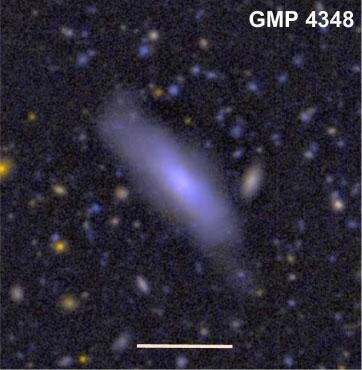
Ultra-diffuse galaxies (UDGs) have very low luminosities, comparatively few stars, and little star-formation activity as compared with normal galaxies of similar sizes...
Read More

Ultra-diffuse galaxies (UDGs) have very low luminosities, comparatively few stars, and little star-formation activity as compared with normal galaxies of similar sizes...
Read More
An international team of researchers has generated an entire virtual UNIVERSE, and made it freely available on the cloud to everyone.
Uchuu (meaning “Outer Space” in Japanese) is the largest and most realistic simulation of the Universe to date. The Uchuu simulation consists of 2.1 trillion particles in a computational cube an unprecedented 9.63 billion light-years to a side. For comparison, that’s about three-quarters the distance between Earth and the most distant observed galaxies...
Read More
Study points to a seed black hole produced by a dark matter halo collapse. Supermassive black holes, or SMBHs, are black holes with masses that are several million to billion times the mass of our sun. The Milky Way hosts an SMBH with mass a few million times the solar mass. Surprisingly, astrophysical observations show that SMBHs already existed when the universe was very young. For example, a billion solar mass black holes are found when the universe was just 6% of its current age, 13.7 billion years. How do these SMBHs in the early universe originate?
A team led by a theoretical physicist at the University of California, Riverside, has come up with an explanation: a massive seed black hole that the collapse of a dark matter halo could produce.
Dark matter halo is the halo of ...
Read More
These are density maps of galaxy cluster distribution. Credit: Kavli IPMU
First observational evidence for assembly bias could impact understanding of the universe. An international team of researchers has shown that the relationship between galaxy clusters and their surrounding dark matter halo is more complex than previously thought. The researchers’ findings are the first to use observational data to show that, in addition to mass, a galaxy cluster’s formation history plays a role in how it interacts with its environment.
There is a connection between galaxy clusters and their dark matter halos that holds a great deal of information about the universe’s content of dark matter and accelerating expansion due to dark energy...
Recent Comments